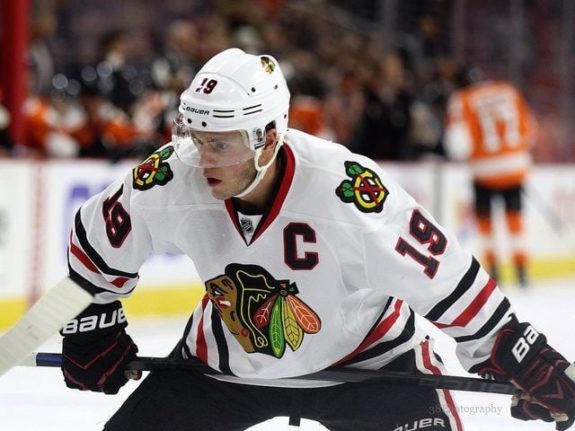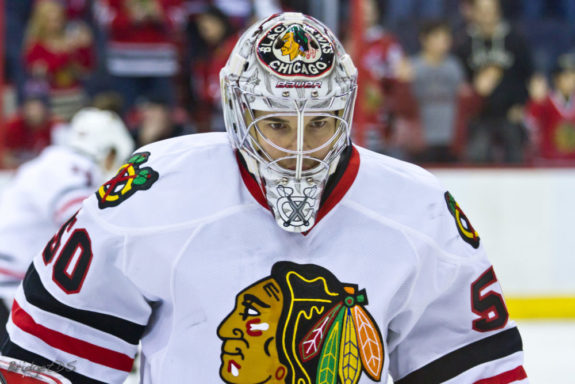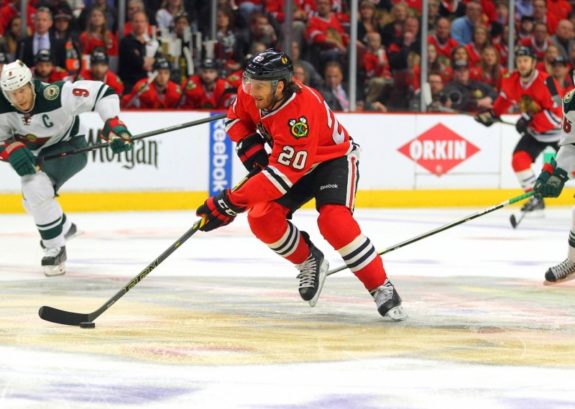After their winless eight-day 2017 playoff run, the Chicago Blackhawks certainly didn’t report to training camp suffering from a celebratory hangover. Instead, they’re pumped up and eager to escape the bitter disappointment that surely haunted them throughout the long offseason. Nonetheless, the defending Western Conference champions are carrying the burden of coming up empty after steamrolling through the last 30 regular season games with 20 victories and 44 points.
The sobering reality is the Blackhawks must shed three bad habits to remain competitive against their Central Division foes, who have become much stronger. Over the past two years, the Blackhawks have declined in winning faceoffs and killing penalties. Hidden on the scoresheet, but just as costly, has been their inability to mount a credible forecheck deep in the offensive zone.
With training camp underway and opening night quickly approaching, it’s a good time to take a closer look at each of these shortfalls and how the Blackhawks might address them.
The Puck Drops Here
The faceoff is the most important play in hockey. For their part, the Blackhawks have been in a freefall at the dot since 2014-15 when they ranked fifth in the NHL, winning 52 percent of their draws. Last season, they won just 47.5 percent and finished next to last.

Perennial faceoff wizard Jonathan Toews posted a 54.9 percent mark on the season and was the only Blackhawk to win the majority of his faceoffs. With the loss of centers Marcus Kruger and Dennis Rasmussen, Chicago will be looking for second-year players Tanner Kero (44.4 percent) and Nick Schmaltz (30.9 percent) to share the faceoff load with Toews and Artem Anisimov (45.1 percent).
Kero came on strong down the stretch and will likely center the third or fourth line. Schmaltz is getting a long look this preseason centering the second line, and the Hawks would love to see a stronger faceoff performance to complement his elite playmaking skill.
That’s where another faceoff tactic should come into play. The Blackhawk center shouldn’t try to win the puck, but instead attempt to tie-up his opponent’s stick, creating a loose puck for his wingers to claim. It’s a set play the Blackhawks would use to generate offense or clear the puck from their own zone. Patrick Kane, Tomas Jurco, Ryan Hartman and Richard Panik are all high-end stick-handlers who can help win faceoffs in this manner.
The Shorthanded Game
The penalty killing units spent most of the last season trying to recover from a horrendous start in which they conceded 15 goals over their first 30 shorthanded chances. It’s awfully tough to recover from a 50 percent kill rate, but the Blackhawks smothered 81.3 percent of their penalties down the stretch to finish the season at 77.7 percent.

Last season, the Blackhawks’ penalty killers were overly passive in which the forwards didn’t pressure the puck, but instead collapsed in towards the “house” to try and block the shooting lanes. In today’s NHL, this is a recipe for disaster that left goaltender Corey Crawford to face a frenzied shooting gallery.
After Chicago was summarily dismissed by Nashville in the playoffs, general manager Stan Bowman immediately fired assistant coach Mike Kitchen, then brought in new assistants Ulf Samuelsson and Don Granato with a specific goal to shore up special teams.
In early preseason action, the results have been encouraging with the Blackhawks aggressively hounding the puck all over the ice, creating turnovers and blocking shots. This signals a welcome sea change in Chicago’s shorthanded strategy that should pay off handsomely over an 82-game season.
Get on the Forecheck
The Blackhawks also need to improve their forecheck deep in the offensive zone. As more teams jam up neutral ice between the blue lines, the Hawks are frequently unable to maintain puck possession into the offensive zone or the play dies inside the blue line due to lack of support. Either way, the play ends without a shot attempt.
The only alternative is a chip-and-chase play which divisional rivals like the Nashville Predators and Minnesota Wild use to great effect with a swarming forecheck down low to win the puck and create scoring chances. The Blackhawks, on the other hand, mostly dump the puck just to get rid of it when a play dies on the rush.

To be successful, the chip-and-chase requires a coordinated team effort to put overpowering numbers on the puck. Players like Toews, Panik, Anisimov, Hartman and Brandon Saad have the speed and power to generate an effective forecheck down low and then make a play to the net. This needs to become a bigger part of the Blackhawks’ playbook.
In their first eight games this season, the Blackhawks will face off against formidable opponents who all advanced to the 2017 playoffs. A daunting test to be sure, so addressing the three troubles above could help launch the Hawks on an early winning trajectory.